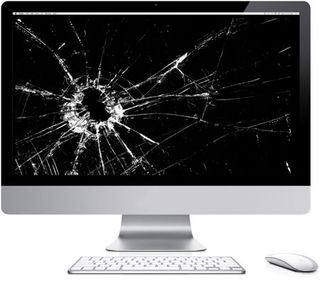Mac Antivirus Protection: Best and Worst Revealed
In a new study from AV-TEST, only four Mac security packages were able to detect all possible threats, and Webroot performed terribly.
If you're hoping to protect yourself against threats to macOS Sierra, there are a handful of security tools you should be trying out.
The folks over at the German independent testing lab AV-TEST have put 12 macOS security tools through the paces to see how well they can detect and respond to possible security threats to the operating system. Unfortunately for most of the security tools, they just can't keep up with malware creators.

According to AV-TEST, four security software packages -- AVG AntiVirus, Bitdefender Antivirus for Mac, SentinelOne Next Generation Endpoint Security Software, and Sophos Home -- were able to detect 100 percent of any Mac malware the company threw at them. In addition to detecting those threats, the security tools were able to fully remove all the malware samples, leaving macOS Sierra in good shape in AV-TEST's testing.
If you're using Avast Mac Security, Intego Mac Internet Security X9, Kaspersky Internet Security for Mac, or Symantec's Norton Security, you'll get what AV-TEST calls, "good but not flawless detection." All four of those applications were able to detect 96.8 percent of all Mac-malware threats they faced. ESET's Endpoint Security and Panda Antivirus were just behind that group, with 93.5 percent detection rates each.
MORE: Best Antivirus Software for Mac - Tom's Guide
Then we have the poor performers. According to AV-TEST, F-Secure SAFE could only detect 64.5 percent of the malware samples that could wreak havoc on a Mac. And in a downright terrible showing, Webroot's SecureAnywhere could only detect and remove 22.6 percent of the Mac threats it faced. Those were the only two apps that didn't get certified by AV-TEST.

AV-TEST used 31 malware threats for its testing. According to the company, all of the malware samples it used were new and started hitting Macs in September and October 2016.
Sign up to get the BEST of Tom’s Guide direct to your inbox.
Upgrade your life with a daily dose of the biggest tech news, lifestyle hacks and our curated analysis. Be the first to know about cutting-edge gadgets and the hottest deals.
"The objective was to determine whether the systems also protect reliably against new malware samples and not whether they recognize the old ones," AV-TEST said in a statement.
In addition to analyzing how the security tools took aim at Mac malware, AV-TEST said it also wanted to see how they could fend off Windows-focused malware. The company said that it conducted the test because Macs could be used "to attack Windows devices in heterogeneous attacks," such as when both Macs and Windows PCs share a local network, making the Macs' abilities to fend off Windows threats important.
AV-TEST said that Bitdefender, which scored a perfect score on macOS, also was able to detect 100 percent of the more than 7,000 Windows malware samples AV-TEST threw at it. Avast, ESET, Sentinel, Kaspersky, and AVG had Windows-malware detection rates between 99.5 percent and 99.9 percent. But Webroot detected only about 40 percent of Windows malware, Norton got only 15 percent and F-Secure, Intego and Panda didn't try at all.
Macs are frequently plagued by adware and other potentially unwanted programs/applications that install themselves when users download free software from the web. Such programs are legal, and antivirus software doesn't always detect or remove them. (Some free AV software even installs them.)
Happily, AV-TEST found that all the Mac antivirus products, except F-Secure SAFE, removed at least 90 percent of unwanted programs, with AVG, Bitdefender, ESET, Kaspersky, SentinelOne and Norton neutralizing north of 99 percent.
Despite our constant recommendations to the contrary, most Mac users don't run antivirus software. But there's no longer any excuse not to. Some of the best Mac AV software -- including Sophos Home, AVG AntiVirus and Avast Mac Security -- is free, and even the Bitdefender and Kaspersky products are inexpensive.
Don Reisinger is CEO and founder of D2 Tech Agency. A communications strategist, consultant, and copywriter, Don has also written for many leading technology and business publications including CNET, Fortune Magazine, The New York Times, Forbes, Computerworld, Digital Trends, TechCrunch and Slashgear. He has also written for Tom's Guide for many years, contributing hundreds of articles on everything from phones to games to streaming and smart home.
